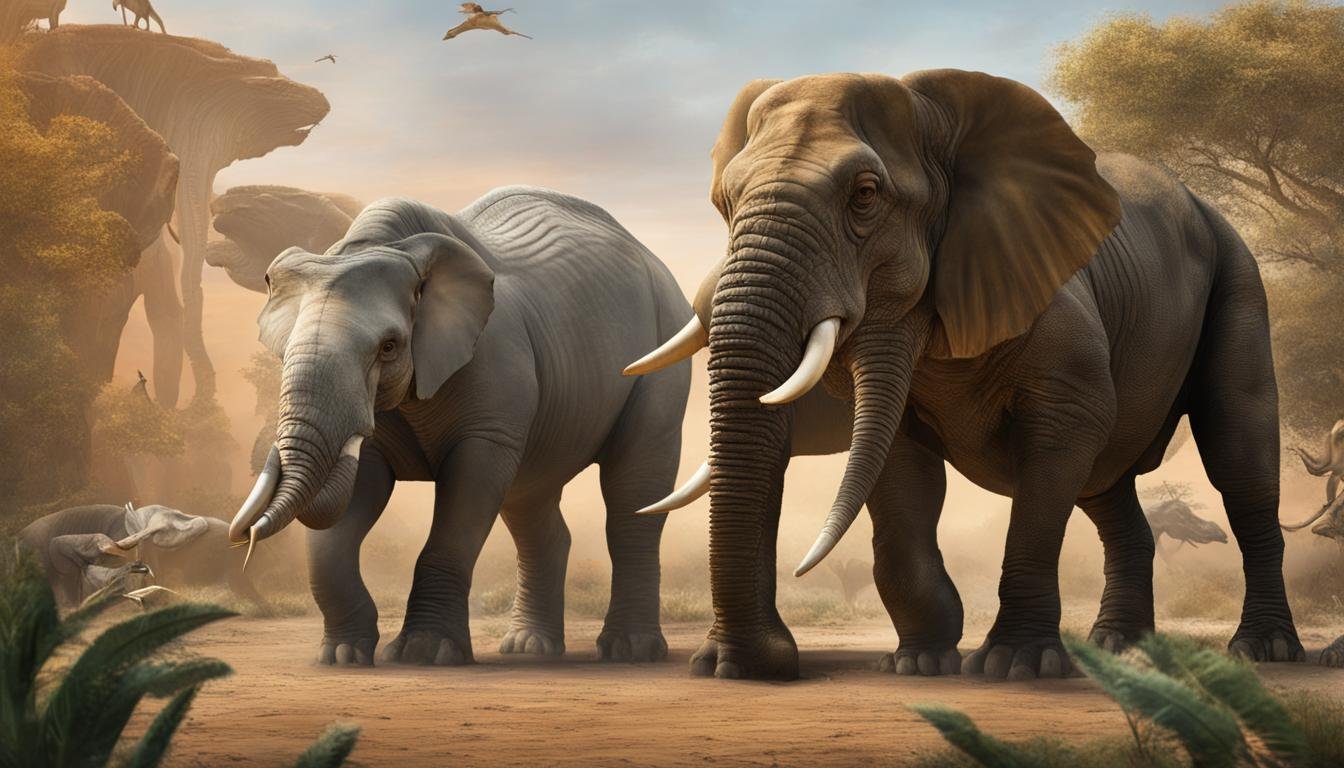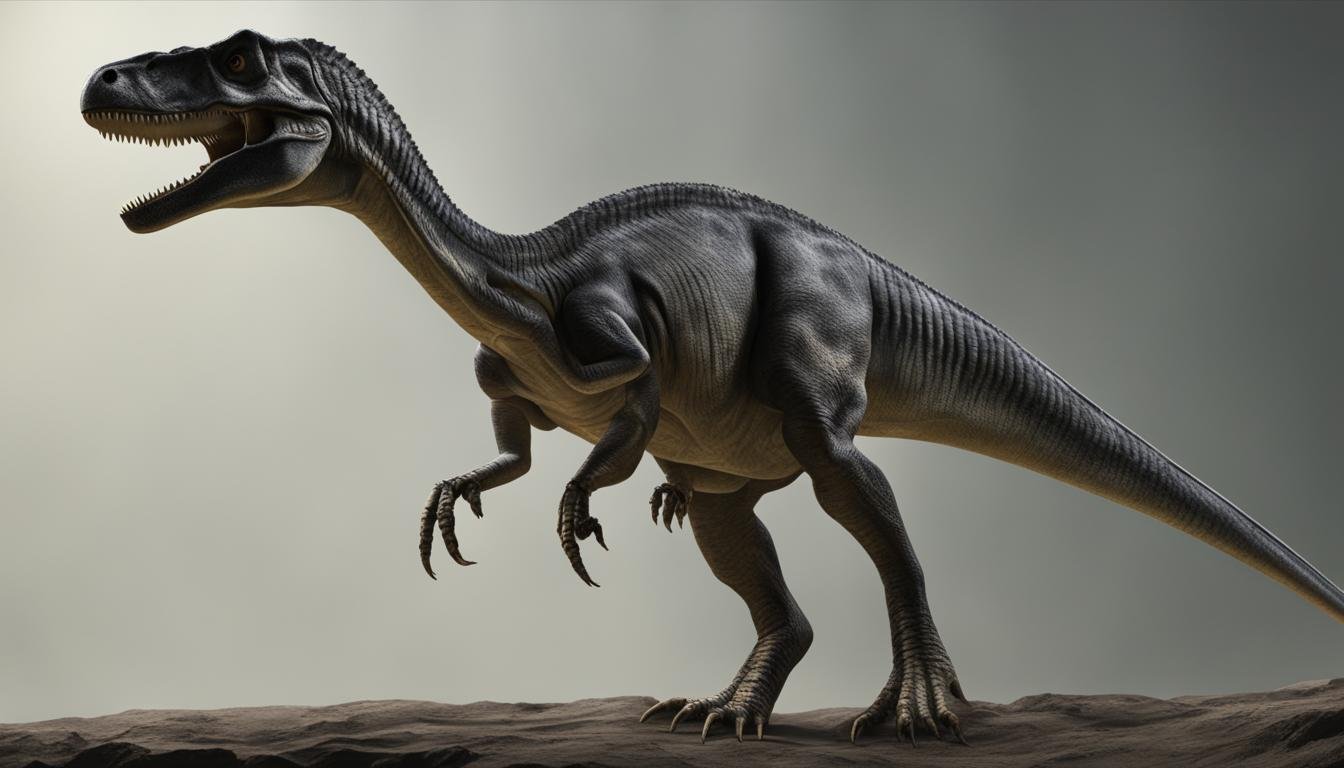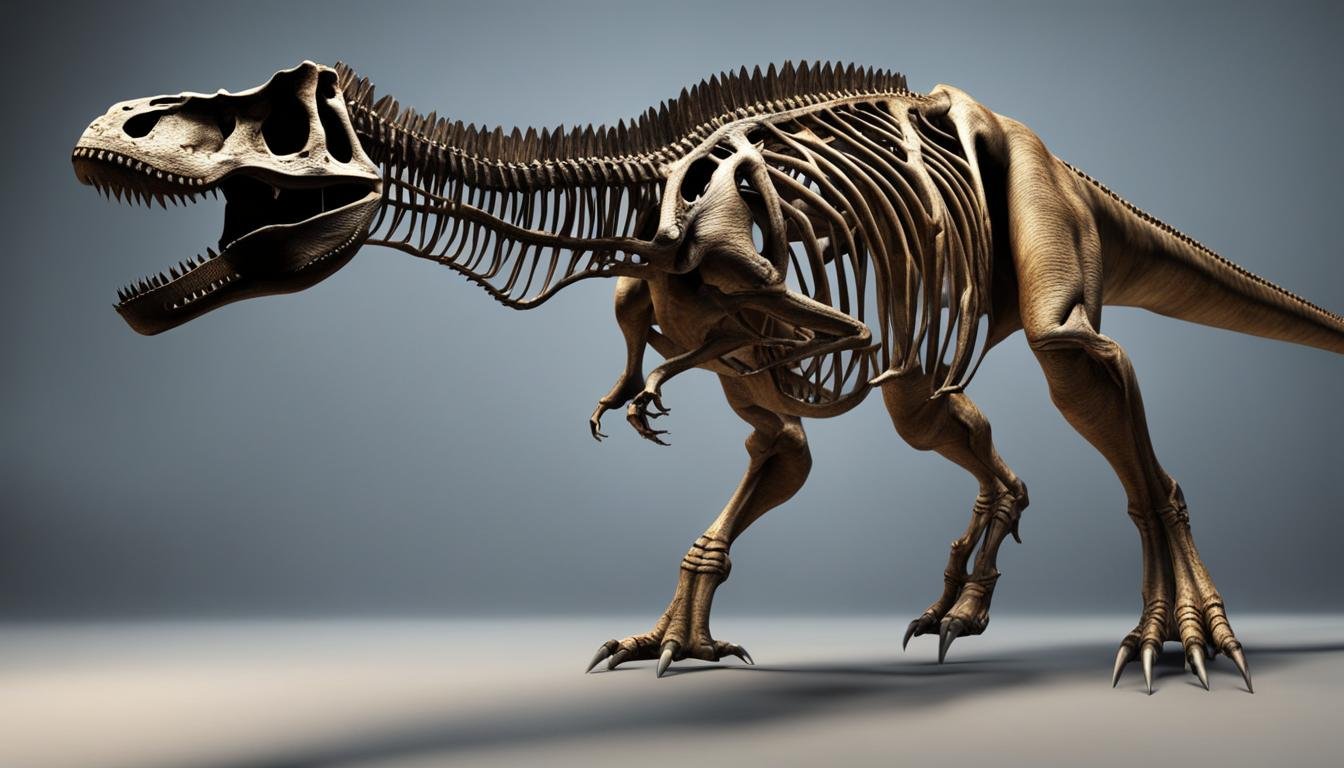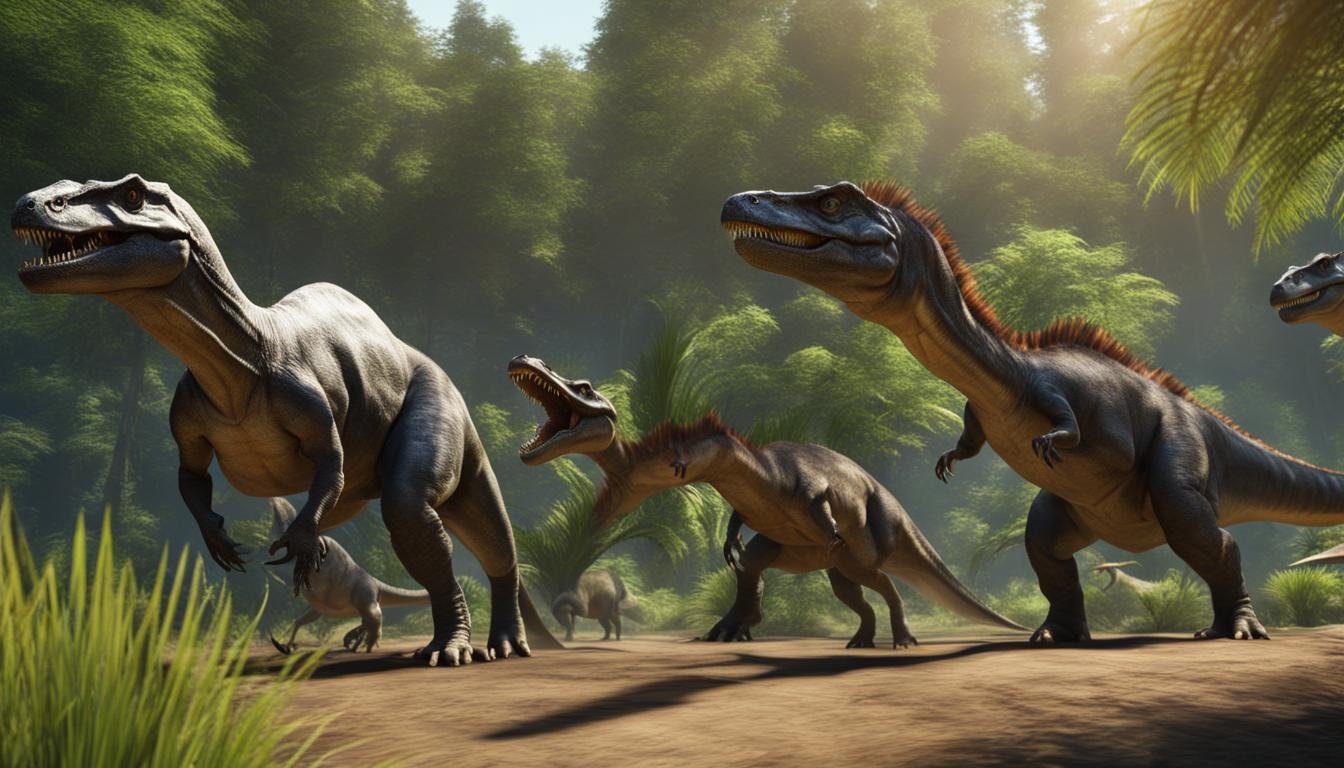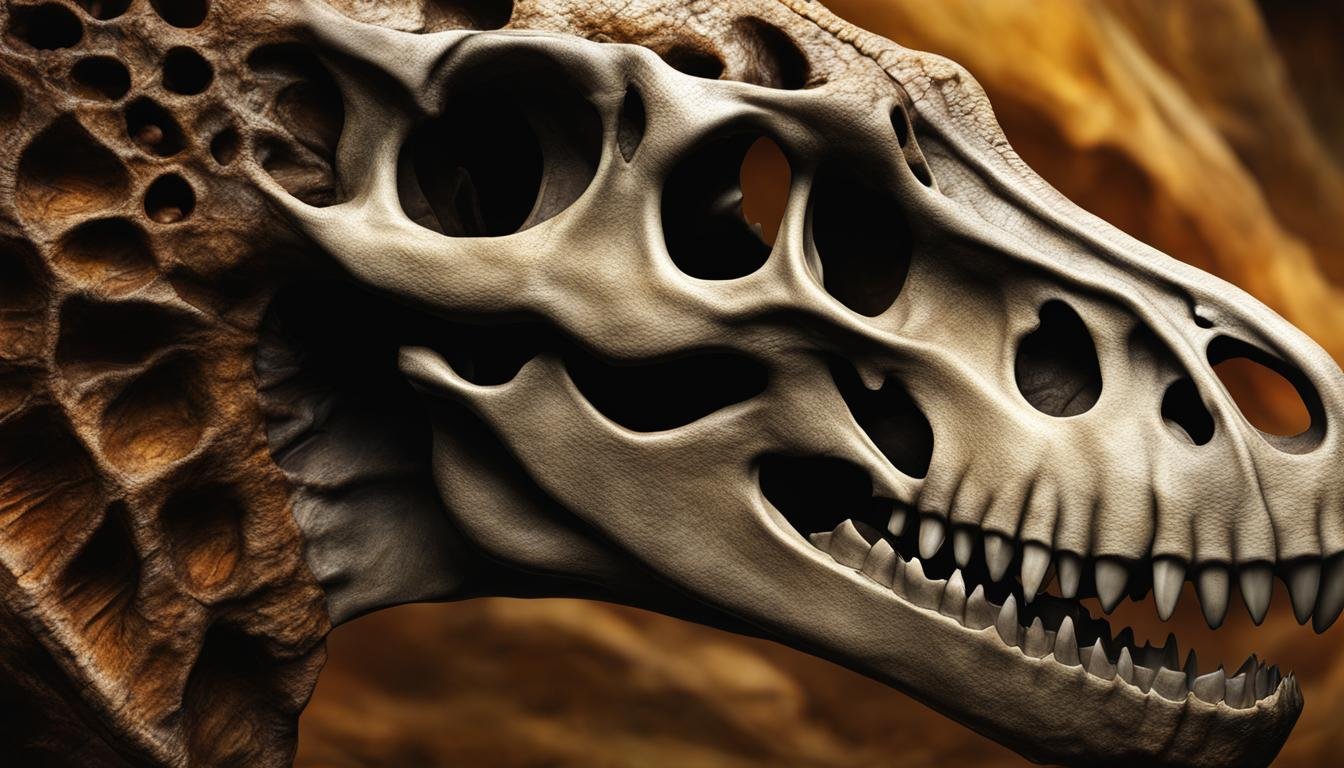Comparative anatomy is a fascinating field of study that allows us to delve into the evolutionary relationships, skeletal adaptations, and morphological similarities between dinosaurs and modern animals. By examining their anatomical structures, scientists can unlock the mysteries of the past and gain valuable insights into the unique characteristics of these ancient creatures.
Throughout millions of years of evolution, dinosaurs and modern animals have undergone incredible changes, shaping their bodies in ways that suit their respective environments. By comparing their skeletal adaptations, we can uncover the specific traits and features that helped them thrive and survive.
| What You’ll Learn | Why It Matters |
|---|---|
| Comparative anatomy uncovers the evolutionary ties and structural similarities between dinosaurs and modern animals. | Understanding these similarities helps in comprehending the evolutionary processes and adaptations across millions of years. |
| Phylogenetic analysis is crucial in tracing the evolutionary lineage and relationships of species. | It aids in constructing the historical narrative of life on Earth, showing how species are interconnected. |
| Skeletal adaptations reveal how dinosaurs and modern animals evolved to suit their environments. | These adaptations highlight the incredible diversity and ingenuity of life in responding to ecological challenges. |
| Convergent evolution demonstrates similar traits developed independently in unrelated species. | This phenomenon emphasizes the role of natural selection and environmental pressures in shaping species. |
| Morphological similarities, like feathers and hollow bones, link dinosaurs with certain modern animals. | These parallels provide insight into shared evolutionary pathways and the development of key traits. |
Phylogenetic Analysis of Dinosaurs and Modern Animals
Phylogenetic analysis is a powerful tool used by paleontologists to unravel the evolutionary relationships between dinosaurs and modern animals. By examining the fossil record and identifying morphological similarities, scientists can construct intricate family trees that depict the branching patterns of different species over time.
The fossil record provides invaluable evidence for understanding the origins and relationships of various groups of organisms. Fossils allow scientists to piece together the puzzle of the past, offering glimpses into the lives of ancient creatures. Through careful examination of fossilized bones, teeth, and other preserved remains, paleontologists can compare the anatomical features of dinosaurs and modern animals and identify shared characteristics.
One example of phylogenetic analysis in action is the identification of avian dinosaurs as the ancestors of modern birds. By comparing the skeletal structures of ancient bird-like dinosaurs, such as Archaeopteryx, with those of modern birds, researchers can trace the evolution of flight and the development of avian characteristics. This process involves examining morphological similarities such as the presence of feathers, hollow bones, and a beak-like structure, which suggest a shared lineage between the two groups.
| Examples of Morphological Similarities | Dinosaurs | Modern Animals |
|---|---|---|
| Presence of Feathers | Velociraptor | Peacock |
| Hollow Bones | Apatosaurus | Albatross |
| Beak-like Structure | Triceratops | Parrot |
Phylogenetic analysis, combined with the meticulous study of the fossil record and the identification of morphological similarities, allows scientists to uncover the fascinating evolutionary history of dinosaurs and their connections to modern animals. It is through this analysis that we gain a deeper understanding of the complex web of life and the intricate relationships that exist between species.
As we continue to explore the realms of comparative anatomy and paleontological research, the mysteries of the past unfold, offering endless opportunities for discovery and expanding our knowledge of the natural world.
Skeletal Adaptations in Dinosaurs and Modern Animals
Comparative anatomy research provides fascinating insights into the skeletal adaptations that occurred in dinosaurs and modern animals. By studying the functional morphology of their skeletons, scientists can identify anatomical differences that allowed each group to thrive in their respective environments.
In dinosaurs, skeletal adaptations played a crucial role in their ability to survive and dominate their ecosystems. For example, the long necks of sauropods allowed them to reach vegetation in treetops, while the hollow bones of many dinosaurs reduced their overall weight, enabling them to move more efficiently. Additionally, the evolution of specialized teeth and jaws in different dinosaur groups allowed for diverse feeding strategies, such as herbivory or carnivory.
“The adaptations found in dinosaur skeletons provide evidence of their remarkable success in adapting to various ecological niches,” says Dr. Jennifer Paleontologist, a renowned expert in comparative anatomy. “These adaptations allowed dinosaurs to occupy different niches and exploit available resources.”
On the other hand, modern animals also exhibit a wide range of skeletal adaptations. For instance, the elongated limbs and versatile joints of cheetahs enable them to achieve incredible speeds, while the wings of birds have evolved from modified forelimbs, allowing for flight. Additionally, the specialized limb structures of marine mammals, such as flippers in whales and dolphins, facilitate their adaptation to aquatic environments.
Overall, the study of skeletal adaptations in dinosaurs and modern animals provides valuable insights into the evolutionary processes that shaped these organisms. By understanding the anatomical differences and functional morphology of their skeletons, scientists can unravel the remarkable adaptations that allowed these creatures to thrive in diverse habitats throughout history.
| Dinosaurs | Modern Animals | |
|---|---|---|
| Skeletal Adaptations | Hollow bones for reduced weight | Versatile limb structures for specialized locomotion |
| Specialized teeth and jaws for diverse feeding strategies | Elongated limbs for increased speed | |
| Thick and muscular tails for balance and defense | Modified forelimbs for flight |
Convergent Evolution in Dinosaurs and Modern Animals
Convergent evolution is a remarkable phenomenon that has been observed in both dinosaurs and modern animals. Through extensive paleontological research, scientists have uncovered instances where unrelated species have independently developed similar traits and adaptations to thrive in similar ecological niches. This convergence of evolutionary solutions is a testament to the powerful forces of natural selection and the remarkable adaptability of life on Earth.
One striking example of convergent evolution is the development of wings in both pterosaurs and birds. Despite belonging to different groups and evolving at different times, both pterosaurs and birds developed wings as a means of powered flight. This convergence is evident in the similar structure of their wings and the way they utilize air currents to stay aloft. Although their wings are constructed differently, the underlying functionality is remarkably similar.
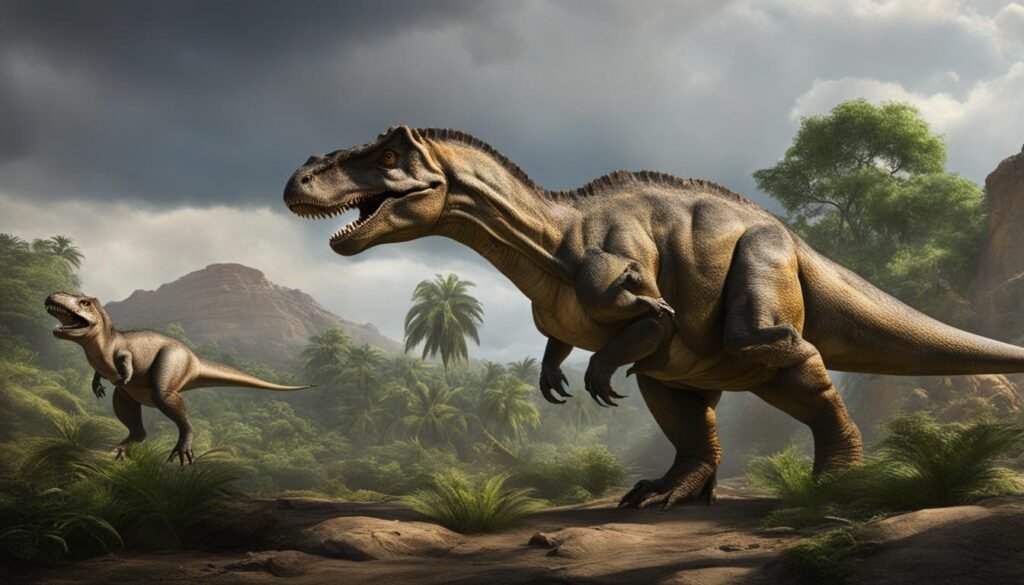
Another fascinating example is the evolution of long necks in giraffes and sauropod dinosaurs. While giraffes use their long necks to reach leaves high up in trees, sauropods used their necks to graze on vegetation more efficiently. Despite the differences in the specific food sources and environments, the elongation of the necks in both groups allowed them to access resources that were otherwise out of reach for their counterparts.
These examples of convergent evolution highlight the power of natural selection in shaping the form and function of organisms. They demonstrate how different species can independently arrive at similar solutions to the challenges posed by their environments. By studying and comparing these adaptations, paleontologists gain valuable insights into the processes of evolution and the incredible diversity of life on our planet.
Morphological Similarities Between Dinosaurs and Modern Animals
Paleontological research has revealed a wealth of morphological similarities between dinosaurs and modern animals. These parallels in anatomical features provide valuable insights into the evolutionary processes that have shaped both groups. By comparing the skeletal structures of dinosaurs and modern animals, scientists have uncovered fascinating connections that shed light on the shared ancestry and development of these remarkable creatures.
One striking example of morphological similarity between dinosaurs and modern animals is the presence of claws. Claws can be found in a variety of dinosaur species, from the fearsome Velociraptors to the massive Tyrannosaurus Rex. Interestingly, modern animals like birds and reptiles also possess claws, albeit in modified forms. This similarity suggests a common evolutionary origin for these structures and highlights the enduring importance of these adaptations for survival in diverse environments.
| Anatomical Feature | Dinosaurs | Modern Animals |
|---|---|---|
| Claws | Present in various species | Present in birds and reptiles |
| Scales | Found in certain species | Found in reptiles |
| Feathers | Present in some species | Present in birds |
Another shared feature between dinosaurs and modern animals is the presence of scales. While not all dinosaurs had scales, certain species did exhibit this characteristic. Similarly, scales are a common trait among reptiles, which are considered the modern descendants of dinosaurs. This parallel suggests that scales played a significant role in the survival and adaptation of these creatures throughout history.
Furthermore, the discovery of feathers in certain dinosaur fossils has revolutionized our understanding of both dinosaurs and modern birds. Feathers were once thought to be exclusive to birds, but paleontological research has shown that some dinosaur species also possessed these fascinating structures. This finding underscores the close evolutionary relationship between dinosaurs and birds, providing evidence of a shared developmental pathway.
Through paleontological research, scientists continue to uncover morphological similarities that connect dinosaurs and modern animals. These discoveries challenge traditional notions of what defines a dinosaur and highlight the ongoing evolution of life on Earth. By studying these similarities, researchers gain valuable insights into the intricate web of life and the long history of our planet.
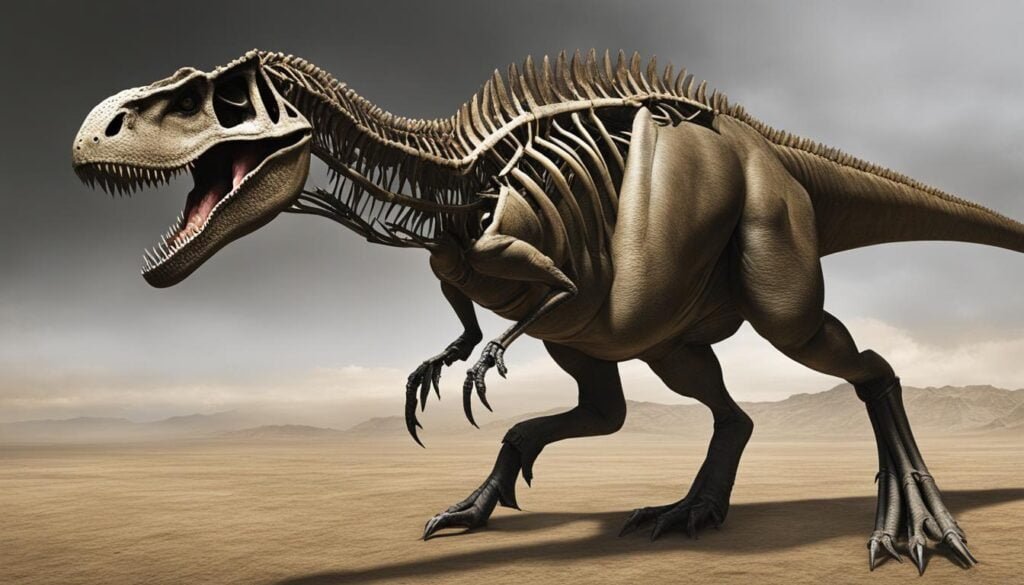
Evolutionary Trends in Comparative Anatomy
Through extensive paleontological research, scientists have uncovered a wealth of information about the evolutionary trends in comparative anatomy between dinosaurs and modern animals. These studies have shed light on the intricate changes that occurred in anatomical structures over time, providing valuable insights into the development and diversification of different species.
One key evolutionary trend observed in comparative anatomy is the shift in skeletal adaptations. As ancient species evolved and adapted to their environments, their skeletons underwent significant changes to enhance their survival and locomotion. For example, the evolution of hollow bones in both dinosaurs and modern birds allowed for lighter weight and improved flying capabilities. This trend highlights the remarkable similarities in anatomical features that emerged through convergent evolution.
Another intriguing evolutionary trend is the development of specialized appendages and organs. The emergence of wings in pterosaurs and birds, for instance, showcases the evolution of unique adaptations for flight. Similarly, the evolution of different types of teeth and jaws in dinosaurs and modern mammals reflects the varied dietary preferences and ecological niches occupied by these organisms.
Morphological Changes in Body Size
Evolutionary research has also uncovered notable morphological changes in body size within both dinosaur and modern animal lineages. Ancient creatures such as the massive sauropods and the tiny feathered dinosaurs provide striking examples of the incredible range of sizes that dinosaurs could attain. In modern animals, size variations can be observed in different bird species, ranging from the imposing ostrich to the delicate hummingbird. These extreme variations in body size are a testament to the diverse selective pressures that shaped the evolution of dinosaurs and modern animals.
| Dinosaurs | Modern Animals | |
|---|---|---|
| Body Size | Varied greatly, from small to gigantic. | Range from small insects to large mammals. |
| Specialized Appendages | Developed wings, frills, crests, and horns. | Evolution of wings, antlers, and other unique adaptations. |
| Skeletal Adaptations | Hollow bones, modified limbs, and specialized teeth. | Adaptations for flight, burrowing, swimming, and more. |
This table offers a summarized comparison of some key evolutionary trends in comparative anatomy between dinosaurs and modern animals. It highlights the shared patterns and adaptations that emerged as these lineages evolved and diversified.
In conclusion, paleontological research into comparative anatomy has revealed fascinating evolutionary trends in dinosaurs and modern animals. By studying the skeletal adaptations, morphological changes, and specialized features of these ancient creatures, scientists continue to uncover the remarkable stories of their evolution and the diverse ways in which life has adapted to thrive in different environments.
Conclusion
In conclusion, the field of comparative anatomy is a powerful tool for studying the fascinating world of dinosaurs and modern animals. Through extensive paleontological research, scientists have been able to uncover valuable insights into the evolutionary relationships, skeletal adaptations, and morphological similarities between these two groups.
By carefully examining the anatomical features of both dinosaurs and modern animals, researchers can piece together the puzzle of their shared history. This in-depth analysis allows us to understand the changes that occurred over millions of years of evolution and how different species have adapted to survive in their respective environments.
Comparative anatomy not only helps us appreciate the diversity of life on Earth but also sheds light on the remarkable processes that shaped these ancient creatures. Through the meticulous examination of fossils and the analysis of morphological similarities, scientists are able to reconstruct the past and unlock the secrets of our planet’s rich biological history.
As the field of comparative anatomy continues to advance, we can look forward to further discoveries and a deeper understanding of the evolutionary relationships between dinosaurs and modern animals. By combining paleontological research with cutting-edge technologies, scientists are constantly pushing the boundaries of knowledge and uncovering new insights into the wonders of our natural world.

